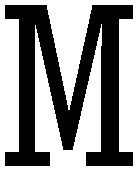‘Lachrimæ, or Seaven Teares Figured in Seaven Passionate Pavans’, met die bijzondere titel bedacht John Dowland in 1604 zijn nieuwe bundel voor vijf gamba’s en luit. Het materiaal van de eerste pavane, de Lachrimae Antiquae of ‘oude tranen’, hergebruikte hij in de beklijvende lutesong ‘Flow my Tears’. De tekst ervan geeft uitdrukking aan de Elizabethaanse obsessie met melancholie, een gevoel dat de neoplatonist Marsilio Ficino toeschreef aan het verlangen van de mens naar zijn hemelse oorsprong. Tussen Dowlands pavanes door horen we Annelies Van Parys’ Interludes, als een hedendaags commentaar. Het Hathor Consort koos ervoor om aan dit weemoedig vlechtwerk van stemmen een zesde toe te voegen in de vorm van een lichaam, meer bepaald dat van Femke Gyselinck. Geïnspireerd door ‘Flow my Tears’ vloeit de danseres zich een weg door de zwarte gal van de melancholie.
‘Lachrimae, or Seaven Teares Figured in Seaven Passionate Pavans’, was the unusual title that John Dowland gave his new collection of works for five gambas and lute in 1604. He reused the material from the first pavane, ‘Lachrimae Antiquae’, or old tears, in his haunting song for lute, ‘Flow my Tears’. Its text reflects the Elizabethan obsession with melancholy, a feeling that the Neoplatonist Marsilio Ficino attributed to mankind’s longing for our heavenly origins. In between Dowland’s pavanes, we hear Annelies Van Parys’ Interludes, as contemporary commentary. The Hathor Consort decided to add a sixth element to this wickerwork of voices, this time in the form of a dancer, notably Femke Gyselinck. Inspired by ‘Flow my Tears’, she flows her way through the darkness of melancholy.
Hathor Consort ensemble
Femke Gyselinck choreografie & dans
J. Dowland (c. 1563 – 1626)
–
7 tranen
A. Van Parys (1975)
–
6 Interludes

